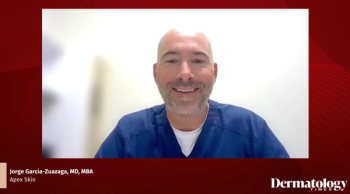
Pathology holds: when, why and how
There is probably no single dermatology practice in this country that doesn't do biopsies, shave removals or excisions that require that a skin specimen be sent to an outside reference lab. A few practices have an in-house laboratory, but it still can be several days before the in-house dermatopathologist has time to read the slides.
Whichever scenario is common to your practice, the issue of holding off on billing insurance for services rendered until the pathology report comes back to verify the diagnosis is on-going. No doubt implementing some sort of "path holding" mechanism delays claims' filing and can be time-consuming. Some even argue that "path holds" increase the liability of the provider(s) because the chart can get misplaced (because it's not filed), or because the charges could end up in la-la land somewhere. If the latter arguments are voiced in your practice, you have some organizational problems that need some serious attention.
In this article, I will try to make the case for holding pathology reports for certain services. I will tell you when to hold and why, and I will briefly discuss how to track services that are pending pathology reports.
You should hold billing claims for services rendered when the diagnosis on the pathology report could affect the choice of CPT codes you assign. In other words, services that are diagnosis-dependent need to be held. Let's discuss three different types of surgical procedures often performed in the dermatology setting that require a histological evaluation:
1. Biopsies (CPT codes 11100, 11101 or the site specific biopsy codes 40490, 67810, 54100 and 69100).
These services are not contingent on any diagnosis. The selection of the code would not be affected whether the final pathology report came back as malignant, premalignant or benign. Because the codes are not diagnosis-dependent and because the reimbursement would not change, these services may be billed using ICD-9-CM diagnosis code 238.2 if the specimen was any type of lesion, and diagnosis code 692.9 if the biopsy was performed for clinical purposes.
2. Shave Removals (CPT codes 11300 to 11313).
These lesions may be diagnosis dependent. The 2005 CPT definition states, "Shaving is the sharp removal by transverse incision or horizontal slicing to remove epidermal and dermal lesions without a full-thickness dermal excision. This includes local anesthesia, chemical or electrocauterization of the wound."
Therefore, if the documentation stated, "Shave removal of a 5 mm/d hyperpigmented lesion of the back. Base cauterized to achieve hemostasis," then the service would be billed using the 11300 to 11313 codes regardless of the diagnosis. For accuracy, the charges should be held so that the correct diagnosis is used. However, the claim could be filed using diagnosis code 238.2 since, based on this definition, it doesn't matter if the lesion is benign or malignant. The code and payment would be the same regardless.
On the other hand, if the operative note stated the following, "Shave removal of a 5 mm/d hyperpigmented lesion of the back followed by conservative destruction. If the lesion is malignant, a more vigorous destruction or even excision may be necessary."
In this instance, the physician could charge a destruction code because there is a combination of treatments (shave removal and destruction) and the physician can select the service that represented the more comprehensive service. The documentation also supports either service. Based on this, if the pathology comes back as malignant, the physician could charge using the destruction of malignant lesion codes (CPT codes 17260 to 17286).
Some providers, based on the final results of the pathology report, may wish to retreat the lesion or even excise the area to assure clean margins. This is perfectly acceptable. Modifier -58 should be used if the additional service is provided within the 10-day postoperative time frame.
In this example, if the pathology report comes back benign, the shave removal code (based on the size of the lesion and the site) may be used, or CPT code 17000 would also be appropriate.
Newsletter
Like what you’re reading? Subscribe to Dermatology Times for weekly updates on therapies, innovations, and real-world practice tips.

















